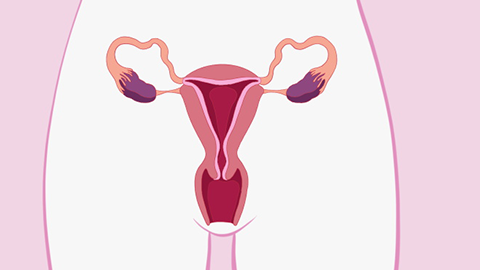What changes occur in the uterine isthmus after pregnancy?
Under normal circumstances, the uterine isthmus undergoes multiple changes after pregnancy, specifically manifested as elongation, softening of tissue, increased and dilated blood vessels, enhanced elasticity, upward displacement, among others. A detailed analysis is as follows:

1. Elongation
During pregnancy, the uterus continuously enlarges under the influence of hormones. As part of the uterus, the uterine isthmus gradually extends, lengthens, and becomes thinner. By the end of pregnancy, the uterine isthmus can extend to 7–10 cm, forming the lower segment of the uterus, preparing for the fetus to pass through the birth canal during delivery.
2. Softening of tissue
During pregnancy, collagen fibers in the connective tissue of the uterine isthmus undergo remodeling, while smooth muscle cells hypertrophy and proliferate, causing the tissue of the uterine isthmus to soften. This change facilitates better dilation of the uterine isthmus during late pregnancy and childbirth, adapting to the passage of the fetus through the birth canal and reducing resistance to the fetus.
3. Increased and dilated blood vessels
To meet the increasing demand for blood supply to support the growing uterus and fetal development after pregnancy, blood vessels in the uterine isthmus proliferate extensively, and existing blood vessels dilate. Various hormones, including estrogen and progesterone, play roles in this process by promoting endothelial cell proliferation, increasing vessel diameter, and significantly enhancing blood flow, thereby providing sufficient nutrients to the uterine isthmus and the entire uterus.
4. Enhanced elasticity
As pregnancy progresses, the content of elastic fibers in the uterine isthmus increases, working together with smooth muscle cells and connective tissue, significantly improving the elasticity of the uterine isthmus. This increased elasticity enables the uterine isthmus to withstand pressure from the uterus in late pregnancy and tension caused by uterine contractions during labor, preventing rupture due to excessive stretching.
5. Upward displacement
As the uterus increases in size, the uterine body gradually shifts upward and forward, and the uterine isthmus also moves upward accordingly. After mid-pregnancy, the uterine isthmus gradually ascends from the pelvic cavity into the abdominal cavity. This change alters the shape of the uterus, providing more space for fetal growth and development, and also changes the relative positional relationship between the uterus and surrounding organs.
Pregnant women should undergo regular prenatal screening during pregnancy to monitor the health status of both the fetus and mother. At the same time, maintaining a healthy lifestyle, including balanced nutrition, appropriate exercise, and regular作息 (作息 translates to作息 rhythm or作息 habits, which can be translated as "rest patterns" or "daily routines"), is important for maternal and fetal health.




